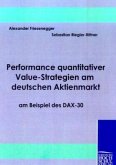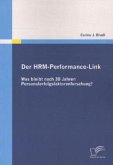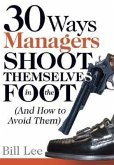One of the latest innovations in asset management that has rapidly increased in popularity in recent years is the so-called 130/30 strategy . Through a combination of leverage and short selling this strategy enables portfolio managers to underweight unattractive securities to a much bigger extent than it is possible with long-only portfolios. This book analyzes the performance of 130/30 and other active extension portfolios that are built according to a quantitative security selection model using typical value fundamentals, such as the dividend yield or the price-to-earnings ratio. In comparison to the benchmark and traditional long-only portfolios the 130/30 strategy does outperform the former two over a 15-year time period from 1993 to early 2008, even after accounting for costs. When analyzing the risk-adjusted returns in more detail it becomes obvious that a 130/30 strategy is an especially promising alternative to passive or active long-only investment strategies in rather weak market phases as they were present during the early years of this decade. That is why a dynamic strategy that switches between 130/30, long-only and index depending on the respective market phase is analyzed as well. When using for example an autoregressive model to select the appropriate strategy such a dynamic approach delivers significantly higher returns than a static active extension portfolio does.
Bitte wählen Sie Ihr Anliegen aus.
Rechnungen
Retourenschein anfordern
Bestellstatus
Storno








